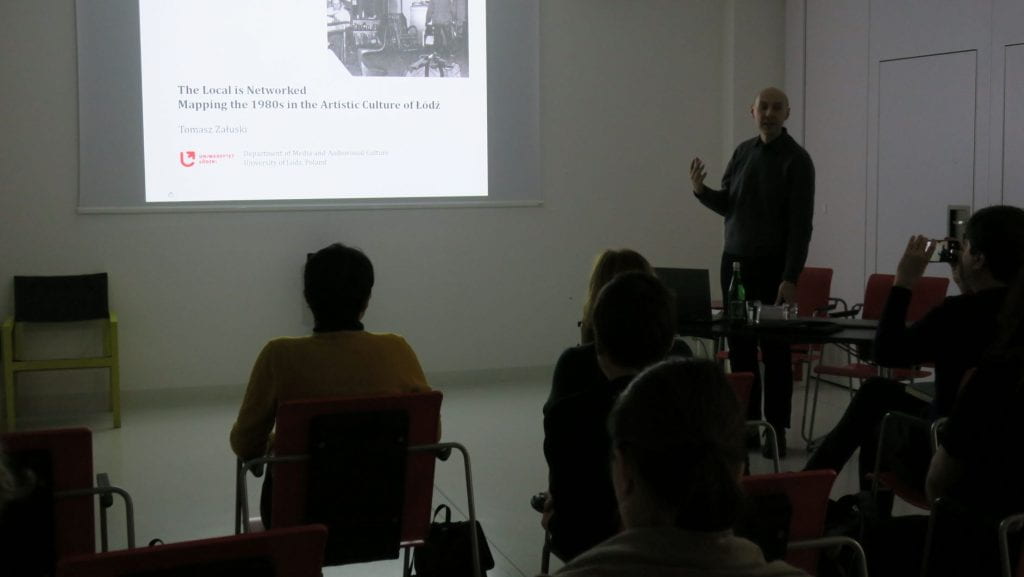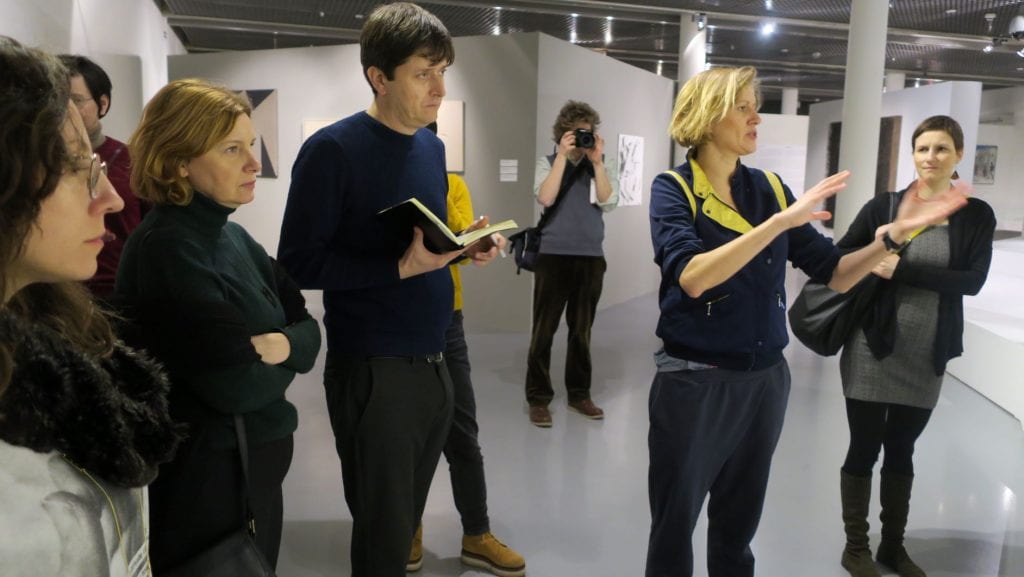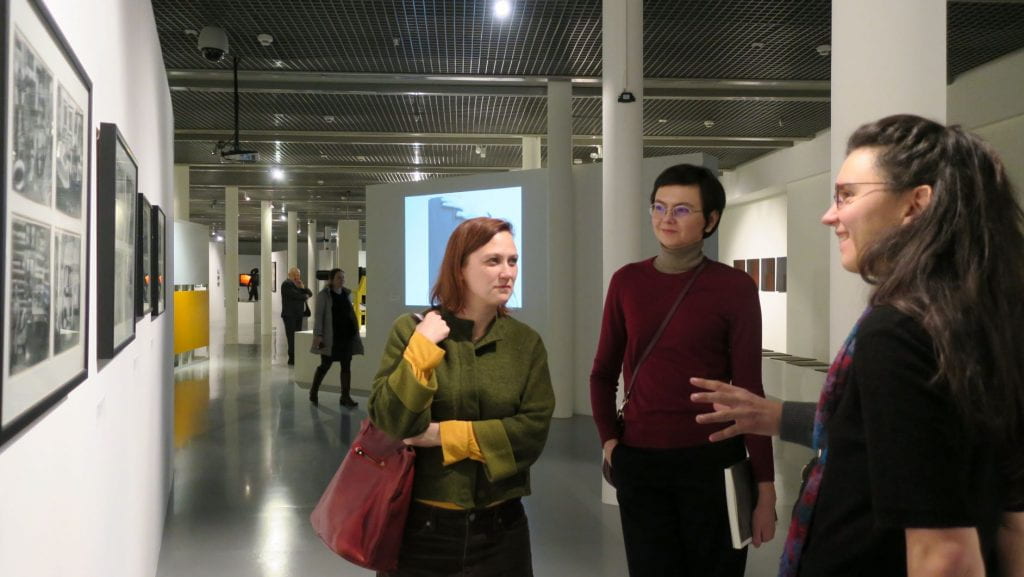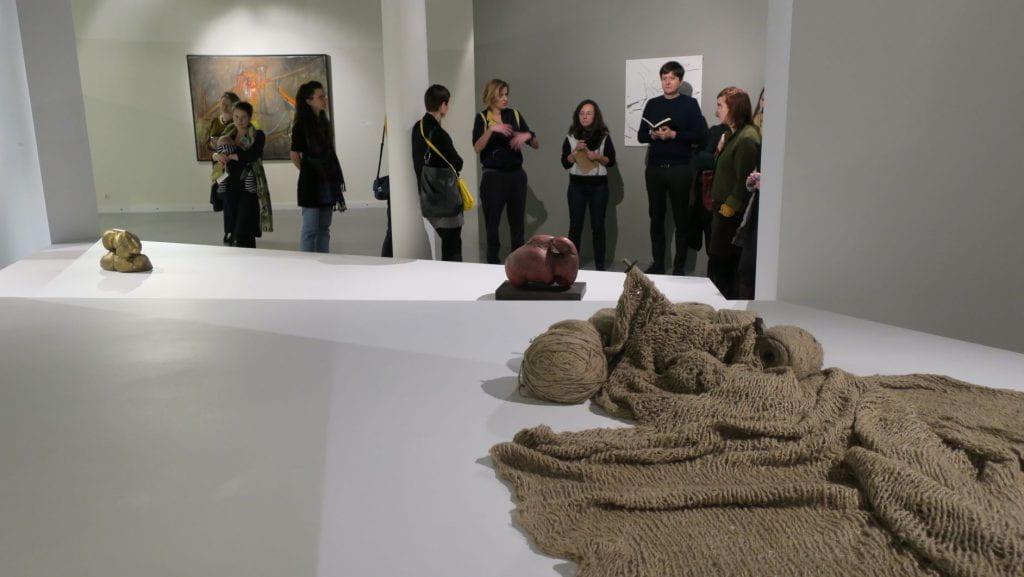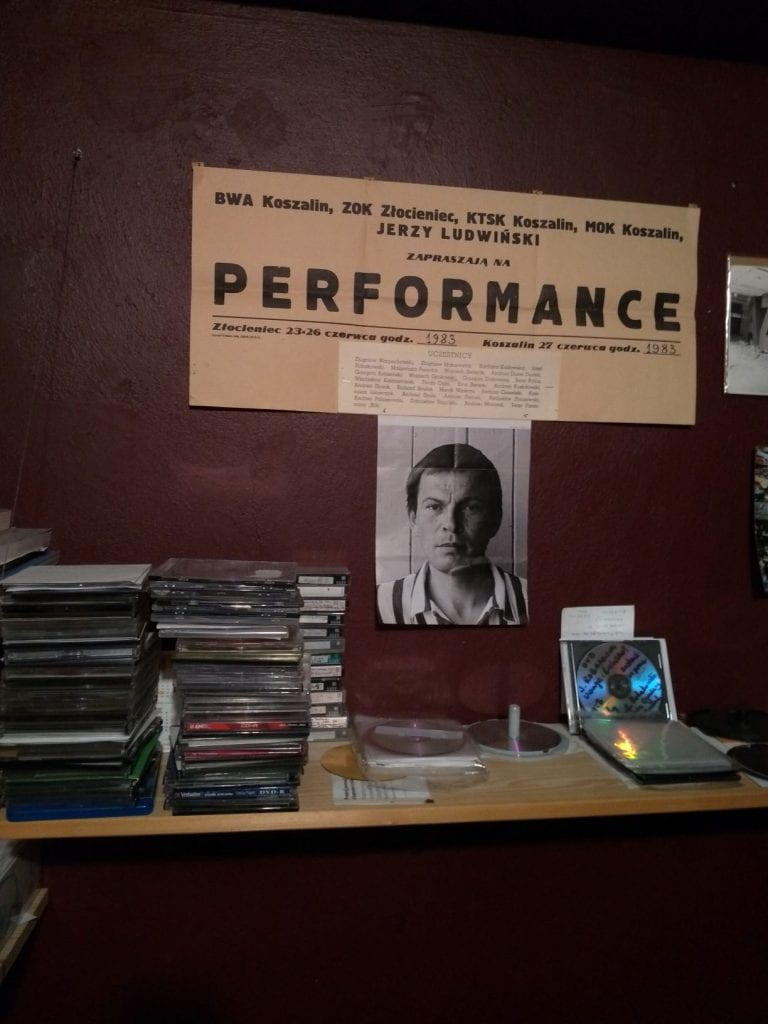Travelling Methodologies
By editorial, on 8 March 2020
Maja and Reuben Fowkes
The third session of Confrontations saw participants journey between two cities in one country, Warsaw and Łódź, breaking the pattern of visiting pairs of art centres in neighbouring countries, namely Zagreb and Ljubljana in April 2019, and Prague and Bratislava the following September. This gave the group the opportunity to delve more deeply into Polish art history and to observe the differences between the state of art infrastructures and atmosphere of the art scene in the capital and in an important regional centre. In the contrast between the self-referential narratives of national – in this case Polish – art history and the informed transnational perspective developed by the Confrontations group, the contours of a novel methodology for the art history of Central and Eastern Europe could be discerned. A collective close reading of an early text by Piotr Piotrowski on Polish the art of the 1980s was the starting point for a crescendo of intensive discussion of the challenges of comparative art history. On the one hand, how did the rise of the Solidarity movement and the period of martial law in the early 1980s differentiate the course of artistic development in Poland during the decade, changing also perceptions of the political transformations around 1989? On the other hand, what do regional parallels reveal about the dynamics of the generational shift that accompanied the eclipse of the neo-avant-garde, the rise of neo-expressionism and the vogue for post-modern aesthetics and attitudes?
 Close
Close





